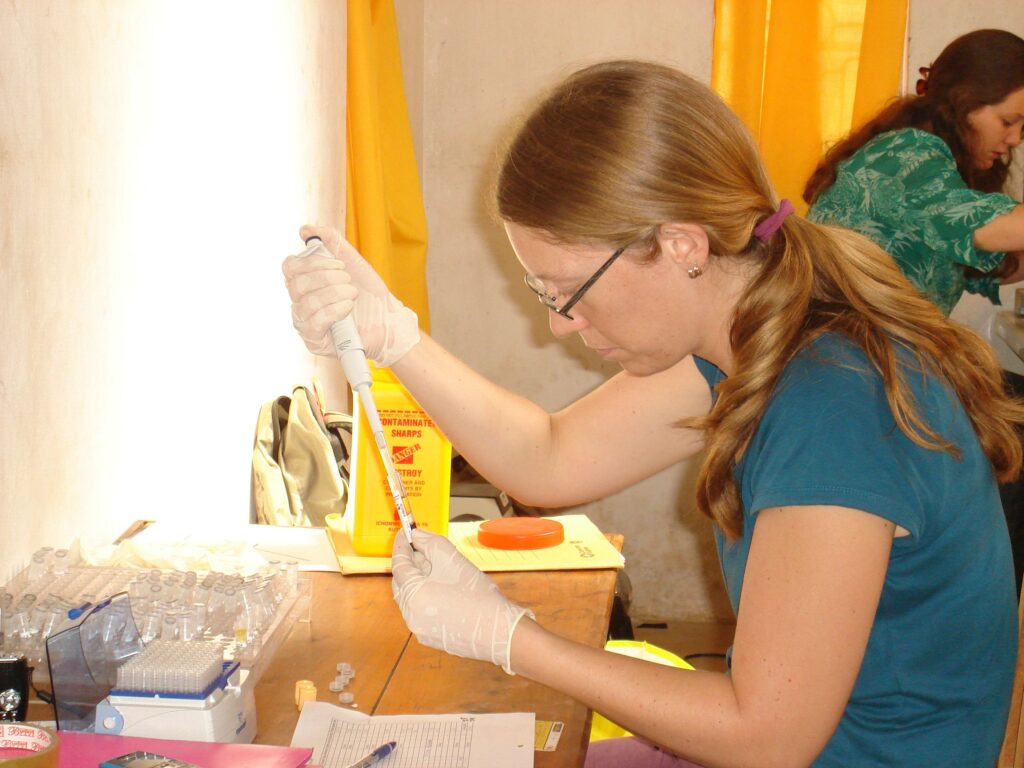In this Q&A, HarvestPlus Communications Analyst Christian Zapata Interviews Elise Talsma, outgoing nutrition researcher based in Cali, Colombia, about her life and work.
Tell us about yourself, Elise.
Well, I am a nutritionist with a passion for reducing malnutrition. As a mother and a scientist, I find it bothersome that not everybody enjoys the same opportunities, including for good health and nutrition.
When and why did you decide on nutrition as your focus?
When I was in high school, I actually wanted to become a medical doctor, but in the Netherlands— where I’m from—admission to the program is decided by lottery. I was unlucky in the lottery three years in a row. In the meantime, I was studying nutrition and health as my second option. It's a bit medical, but more applied. Then when I started doing my first master’s thesis, with my own research question and methods, working with my own data, drawing up my own conclusions…for me, that was an eye-opener. That was real science, what I wanted to do.
And how did you get involved with biofortification?
In 2008, my family and I moved to Kenya, and that’s where I first got immersed in biofortification. I was a Ph.D. student and my thesis was on whether eating biofortified yellow cassava improves the vitamin A status of children. I looked for children with lower vitamin A status and finally after years of preparation started an efficacy trial. The findings confirmed that indeed yellow cassava improves children’s vitamin A status.
And with HarvestPlus?
After finishing my research in Kenya in 2014, I got the opportunity to work with HarvestPlus, a global leader in biofortification. It appealed to me because I would be seeing science being applied every day. At HarvestPlus we are really putting knowledge into practice.
What does your normal work involve?
My work focuses on nutrition research in Latin America. I also head the laboratory where we test all the crops HarvestPlus is promoting in this region, especially beans, rice, maize, cassava and sweet potatoes.
We are not only testing the nutritional content of the crops, but also studying retention. That involves taking local recipes from the various countries in which we operate, and then preparing those recipes using biofortified varieties to see how much of the nutrients are retained after the processing and cooking. We also conduct acceptability studies to find out if people actually like the new biofortified crops. Also, we work together with the breeders and assist with important nutrition components for these crops. There's a capacity building component as well, in the sense that we work with local partners in the countries where we operate.
What is the first thing that comes to mind when you think of biofortification?
That it is an "easy" solution, in a way, if you think of all the things that are part of it. People are already eating a certain crop, which you just substitute for a biofortified one and voila, you have a higher intake of a certain nutrient.
When I started working on biofortification in 2008, not many people knew what it was. I feel now that it has gained the international community’s recognition as one of the sustainable interventions to address hidden hunger.
How important is biofortification in the battle against hidden hunger?
It's very important. I think hidden hunger is one of the things we can prevent easily by simple and impactful interventions like biofortification. But, of course, it is not a silver bullet; biofortification complements other nutrition strategies.
There are more men than women in science. Is science missing out on any special qualities women could bring to the field?
Well, I think that women are certainly suited to the sciences; we are more focused on the details, and often we are better communicators. This latter quality is especially important in today’s world as it is no longer enough for scientists to just produce research; we are now also expected to publicize our research findings to wider audiences, and to court funding.
We should all work to ensure a more enabling environment for women and girls to be part of the scientific community. Second, parents and spouses should be supportive of girls and women in science. For me, my husband, Jasper, has been and continues to be a significant support. He stays at home with our daughter so that I can travel, and follows me around the world for work, sometimes even helping with my projects, like fixing solar panels, centrifuges, and much more.
See Elise at work in the slideshow below.
